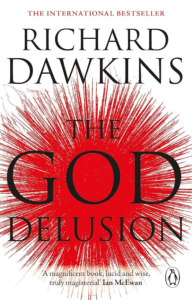The Glimmer and Shadows of “The Stolen Queen”
Fiona Davis’s “The Stolen Queen” offers a captivating journey through time, seamlessly intertwining the vibrant world of the Ziegfeld Follies in 1920s New York with the present-day discoveries of a determined archivist. The novel masterfully layers these two narratives, drawing the reader into a compelling exploration of ambition, secrets, and the enduring echoes of the past.

Echoes of the Jazz Age: Marion’s Story
At the heart of the historical thread lies Marion Brooks, a reimagined version of the real-life Marion Davies, depicted as a spirited and ambitious chorus girl navigating the dazzling yet demanding realm of the Ziegfeld Follies. Davis paints a rich and immersive picture of this era, from the backstage bustle and rigorous rehearsals to the intoxicating allure of the stage. Marion’s journey becomes a compelling exploration of navigating her aspirations, experiencing love, and grappling with the intricate power dynamics of the time, particularly her complex relationship with the influential William Randolph Hearst. The novel thoughtfully portrays the dual nature of this connection, acknowledging both the opportunities it presented and the inherent limitations it imposed.
Unearthing Secrets in the Present: Clara’s Quest
The narrative then shifts to the present day, where Clara, a dedicated archivist, undertakes the task of curating a collection of Marion Brooks’s artifacts. As Clara grapples with her own evolving life, her deep dive into Marion’s past begins to unearth long-concealed secrets and unexpected parallels to her own experiences. This skillful dual timeline is a key strength of the novel, allowing Davis to explore enduring themes of identity, ambition, and the profound influence of the past on the present. Clara’s discoveries not only illuminate the true story of Marion but also serve as a catalyst for her own self-reflection and confrontation of personal vulnerabilities.
A Vivid Tapestry of Time and Place
Davis excels at creating a palpable sense of atmosphere. The novel vividly recreates the dynamic energy of 1920s New York, from the opulent grandeur of the theaters to the lively pulse of the city streets. The reader can almost hear the melodies, visualize the shimmering costumes, and feel the palpable excitement of the era. This meticulously crafted historical backdrop serves as more than mere scenery; it actively shapes the characters’ lives and the choices they make, underscoring the societal expectations and constraints placed upon women during that period.
Beyond Romance: Exploring Female Agency
“The Stolen Queen” transcends the boundaries of a simple historical romance. It delves into the intricate complexities of female agency within a society largely dominated by powerful men. Marion’s fictionalized story resonates with the real challenges faced by women in the entertainment industry and in their personal lives during the early 20th century. Clara’s contemporary perspective offers a valuable lens through which to examine societal progress, while also prompting reflection on persistent inequalities.
In conclusion, Fiona Davis has masterfully crafted a compelling and insightful novel in “The Stolen Queen.” By seamlessly weaving together a captivating historical narrative with a thought-provoking contemporary storyline, she brings a fascinating era to life while exploring timeless themes of ambition, love, and the enduring quest for self-discovery. The book offers a rich and rewarding reading experience for those who appreciate historical fiction, strong female characters, and a touch of intrigue, leaving a lasting impression of the women who navigated the dazzling and demanding world of the Ziegfeld Follies and the secrets they held.




















